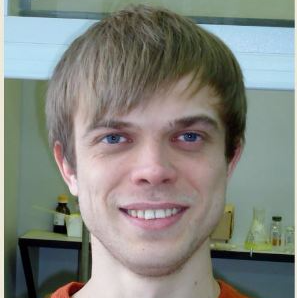New Insights into Furans Transformations
A special issue of Molecules (ISSN 1420-3049). This special issue belongs to the section "Organic Chemistry".
Deadline for manuscript submissions: closed (15 September 2021) | Viewed by 7128
Special Issue Editors
Interests: chemistry of donor–acceptor cyclopropanes; transformations of furans to other heterocycles
Interests: chemistry of heterocyclic compounds; transformations of furans; dearomatization; catalysis; new synthetic methods; the synthesis of natural and biologically active compounds
Special Issue Information
Dear Colleagues,
We are happy to be Guest Editors of the Special Issue of Molecules, devoted to “New Insights into Furans Transformations”. The chemistry of furan, on the one hand, has a long history, but on the other hand, it has received a new life after developments of methods for the large-scale preparation of furan derivatives during biomass processing. These technological advances stimulated studies of diverse modifications of simple furans to polysubstituted ones and investigations of furans transformations to various acyclic, alicyclic, and, especially, heterocyclic molecules. For example, furans acylation or alkylation followed by hydrogenation can be used for the preparation of diesel fuel or gasoline additives. Both intermolecular and intramolecular versions of the Diels-Alder reaction followed by post-modifications of the formed [4+2]-cycloadducts are used for the synthesis of carbo- and heterocycles, including total synthesis of natural products. Another important area of furans transformations is a diversity of acid-induced rearrangement, such as the Piancatelli rearrangement, Butin reaction, and other processes. In recent years, the related Lewis acid-induced and π-acid-catalyzed processes have attracted increasing attention. In addition to the Achmatowicz reaction, whose 50th anniversary is in 2021, many other oxidative transformations of furans are under development. We are inviting reviews and original reports devoted to various aspects of furans transformations, both those mentioned and others not described here, and hope that this Special Issue will be of great interest to the organic chemistry community.
Prof. Dr. Igor V. TrushkovDr. Maxim G. Uchuskin
Guest Editors
Manuscript Submission Information
Manuscripts should be submitted online at www.mdpi.com by registering and logging in to this website. Once you are registered, click here to go to the submission form. Manuscripts can be submitted until the deadline. All submissions that pass pre-check are peer-reviewed. Accepted papers will be published continuously in the journal (as soon as accepted) and will be listed together on the special issue website. Research articles, review articles as well as short communications are invited. For planned papers, a title and short abstract (about 100 words) can be sent to the Editorial Office for announcement on this website.
Submitted manuscripts should not have been published previously, nor be under consideration for publication elsewhere (except conference proceedings papers). All manuscripts are thoroughly refereed through a single-blind peer-review process. A guide for authors and other relevant information for submission of manuscripts is available on the Instructions for Authors page. Molecules is an international peer-reviewed open access semimonthly journal published by MDPI.
Please visit the Instructions for Authors page before submitting a manuscript. The Article Processing Charge (APC) for publication in this open access journal is 2700 CHF (Swiss Francs). Submitted papers should be well formatted and use good English. Authors may use MDPI's English editing service prior to publication or during author revisions.
Keywords
- Furans
- Cycloaddition
- Dearomatization
- Rearrangement
- Oxidative transformations
- Organic synthesis
- Synthetic methods
- Multicomponent reactions
- Natural and bioactive compounds
- Domino reactions
Benefits of Publishing in a Special Issue
- Ease of navigation: Grouping papers by topic helps scholars navigate broad scope journals more efficiently.
- Greater discoverability: Special Issues support the reach and impact of scientific research. Articles in Special Issues are more discoverable and cited more frequently.
- Expansion of research network: Special Issues facilitate connections among authors, fostering scientific collaborations.
- External promotion: Articles in Special Issues are often promoted through the journal's social media, increasing their visibility.
- e-Book format: Special Issues with more than 10 articles can be published as dedicated e-books, ensuring wide and rapid dissemination.
Further information on MDPI's Special Issue polices can be found here.







